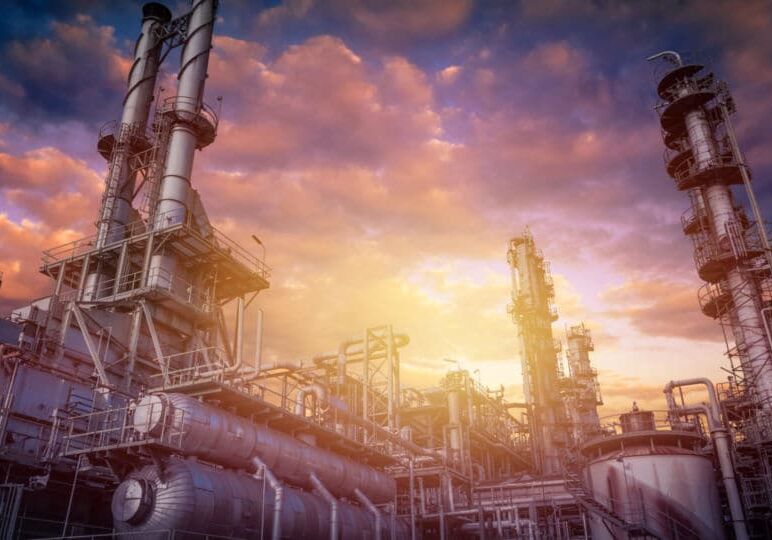Rezel Catalysts Corporation on the post-pandemic rise of catalytic reforming

Far from being limited to transportation fuels, refining and petrochemical processes create a variety of products that are used in everyday life. Fueled by the global pandemic, the refining industry has witnessed an unprecedented shift in product demand, including a decrease in transportation fuels and an increase in petrochemical-based packaging due to the need for hygienic packaging, including food packaging, medicine delivery, masks, and other single-use products.
While the petrochemicals sector is set to lead demand growth1, the refining industry is suffering from reduced, flat or declining, transportation fuel demand. Gasoline will remain the primary fuel for light-duty vehicles through 20402. However, quality specifications continue to evolve in response to numerous environmental regulations directed to sustainability, mitigating climate change, and improving air quality, providing a new challenge for the traditional fuels market.
Established Gasoline Upgrading Processes
Gasoline is a blended fuel produced from the fractional distillation of crude oil and other petroleum liquids, including reformate, isomerate, and alkylate.
- Reformate is produced in the catalytic reforming process, where lower octane naphthenes in the presence of catalyst and hydrogen undergo rearrangement into higher octane compounds.
- Isomerate is produced in the isomerization process, where light naphtha fractions are upgraded to higher octane, while benzene is simultaneously reduced by saturation of benzene. Isomerateis very low in sulfur and benzene.
- Alkylate is produced in the alkylation process, where isobutane and low-molecular-weight alkenes (primarily a mixture of propene and butene) are converted into a high-octane, low-RVP component with very low sulfur content. Unlike reformate, alkylate is free of aromatics and olefins.
Catalytic Reforming and Isomerization – Complementary Processes
Catalytic reforming and isomerization processes are increasingly important due to regulatory-driven limitations on gasoline benzene, aromatics, and olefins. These processes maximize gasoline yield from the crude oil, as the catalytic reforming of heavy naphtha and isomerization of light naphtha constitute two essential sources of high-octane blend components.
Catalytic reforming is a chemical process used to transform C7–C10 hydrocarbons with low octane numbers to aromatics and iso-paraffins with high octane numbers. A valuable by-product from catalytic reforming is hydrogen, for which demand is increasing, for example, to support the increased demand for hydroprocessing of refinery process feedstocks and products.
On the other hand, isomerization is a simple, cost-effective process that isomerizes n-C5 and n-C6 to their corresponding, branched isoalkane to produce a high-octane gasoline blend component while reducing benzene content by saturation of the benzene fraction.
The processes of catalytic reforming, isomerization, and alkylation are the most common ways to improve gasoline quality, boosting blended gasoline octane and addressing environmentally driven quality requirements. For the past several decades, ongoing development has optimized these processes and their catalysts to increase the yield of these desirable blendstocks.
Increasing Demand for Petrochemicals amid the Global Pandemic
The popularity of dehydrogenation processes had been on a steep growth curve before the global pandemic. The pandemic put further strains on available supply due to the increased demand for hygienic packaging, including food packaging, medicine delivery, masks, and other hygienic single-use products. The pandemic further strains the available supply as refiners that might be able to supply incremental petrochemical feedstocks like propylene are permanently shuttered or idled against reduced demand for transportation fuels.
The increasing interest in dehydrogenation processes is primarily driven by propylene demand. Propylene is generated from the dehydrogenation of propane in streams containing 95% or more propane. The propane dehydrogenation (PDH) process can come in various configurations, including fixed bed, moving bed, and fluidized bed processes, and might derive petrochemical feedstocks from the propane, isobutane, or mixed C3-C4 streams.
Shifts in Demand and Competitive Solutions
Major demand shifts, accelerated by the global pandemic, have resulted in historically low oil prices, reduced transportation fuel demand, and increased petrochemical demand. Reflecting on these trends, the refining and petrochemical industry is focusing on long-term business strategies towards a petrochemical oriented future and more demanding fuels regulations. We can and should, therefore, expect increased competitive solutions in the form of continued improvements in processes and catalysts.
- The Catalyst Group Resource. “The Intelligence Report: Business Shifts in the Global Catalytic Process Industries, 2019-2025”
- ExxonMobil. “2019 Outlook for Energy.”
Read more:
- Aramco to Acquire 50% Stake in Air Products Qudra’s Blue Hydrogen Industrial Gases Company
- SK Innovation and SK E&S Announce Merger, Forming Asia-Pacific’s Largest Private Energy Company With Assets of KRW 100 Trillion
- Indorama Ventures Secures $200 Million Loan From IFC to Drive Sustainability Program
- Aramco’s Strategic Gas Expansion Progresses With $25bn Contract Awards
- GC CEO Narongsak Jivakanun Reveals Vision to Continue 3 Steps Plus Strategy and Drive Map Ta Phut to Become Southeast Asia Hub